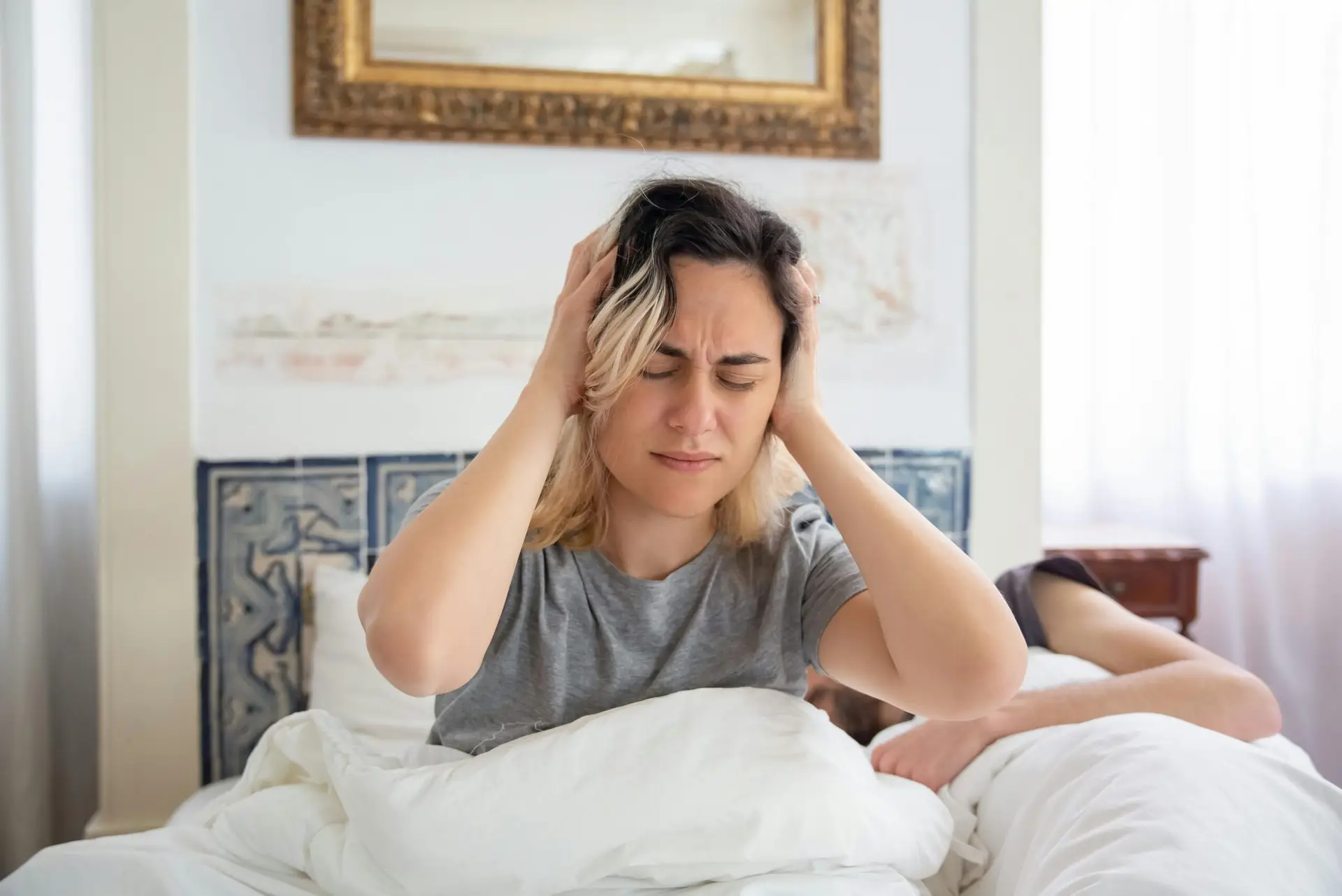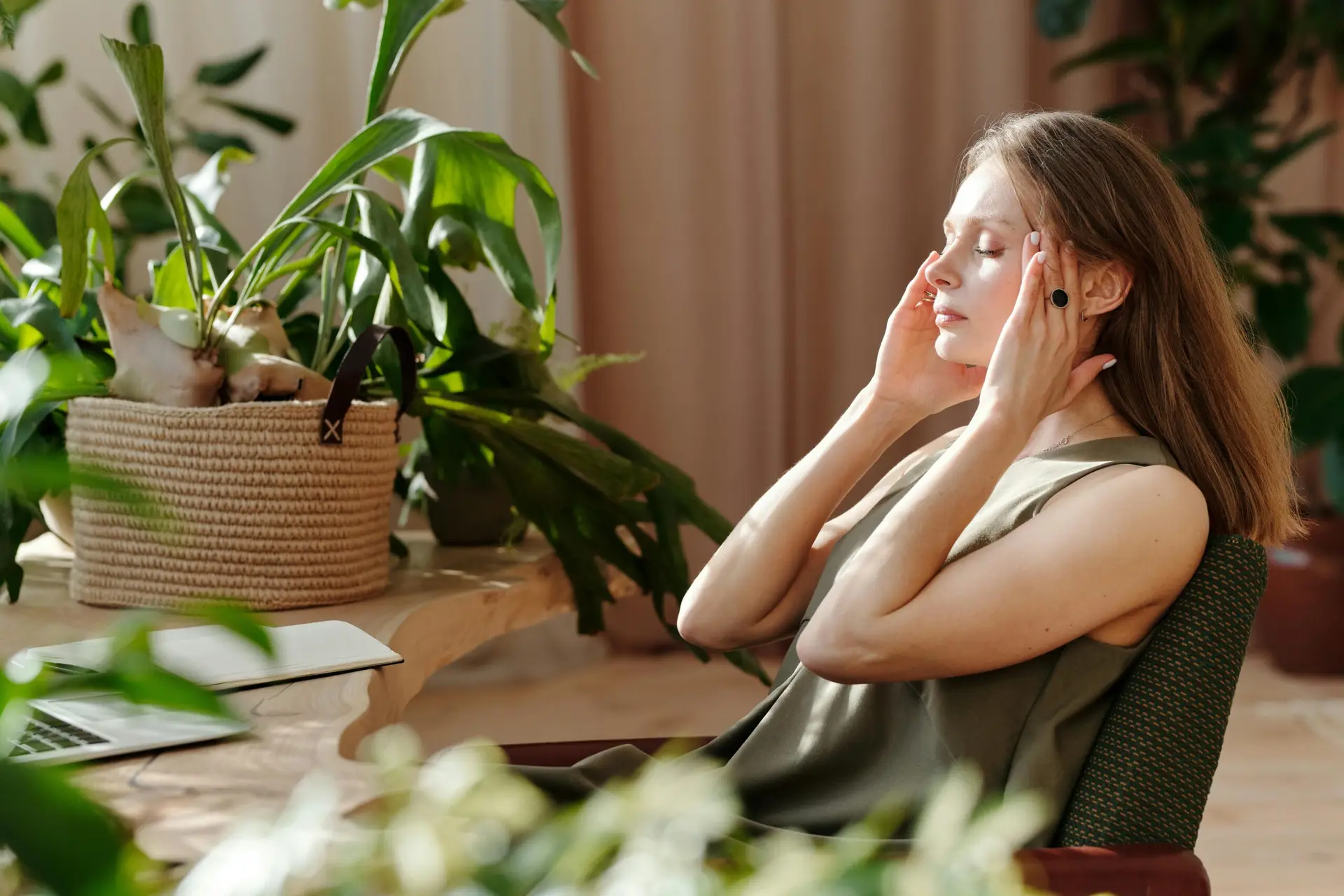
Occipital Neuralgia: Living with relentless head and neck pain can wear you down fast—especially when it stabs like electricity at the base of your skull, shoots upward behind an eye, or radiates across the scalp when you simply turn your head. If that sounds familiar, you might be dealing with occipital neuralgia: an often-misunderstood nerve irritation problem that can masquerade as migraines, tension headaches, or even sinus pain. The overlooked culprit in many cases? A subtle—but powerful—shift in the atlas (C1) at the very top of your neck.
At Lavender Family Chiropractic in Sarasota, Florida, our doctors—Dr. Rusty Lavender, Dr. Jacob Temple, and Dr. Will Guzinski—focus exclusively on upper cervical chiropractic. Using 3D CBCT imaging and functional nervous system scans (Tytron), we identify micro-misalignments at the atlas and axis that can irritate the greater and lesser occipital nerves, disrupt blood and cerebrospinal fluid (CSF) dynamics, and amplify pain processing around the brainstem. Our approach is gentle, precise, and corrective, designed to fix the root cause—not chase symptoms.
What Is Occipital Neuralgia?
Occipital neuralgia is pain originating from the occipital nerves—sensory nerves that start where your neck meets your skull and travel upward to the scalp. When these nerves are irritated, compressed, or inflamed, they can create:
- Sharp, stabbing, or “electric shock” pain at the base of the skull
- Pain that radiates to the top of the head, behind one or both eyes, or into the temples
- Scalp tenderness (even brushing your hair hurts)
- Light or sound sensitivity during flare-ups
- Neck stiffness and a deep ache that worsens with head movement
Because it can mimic migraines and tension headaches, occipital neuralgia is frequently misdiagnosed, and many patients go years without a targeted solution.
The Anatomy You Should Know (Made Simple)
Think of your upper neck as a delicate crossroads. The atlas (C1) and axis (C2) cradle the base of your skull and protect the lower brainstem. Nestled around this area are:
- The greater occipital nerve (GON)—a branch of the C2 dorsal ramus that ascends to the scalp
- The lesser occipital nerve (LON)—arising from cervical plexus fibers, traveling behind the ear
- The third occipital nerve (TON)—arising from C3, sometimes involved in suboccipital pain
- The suboccipital muscles (rectus capitis posterior major/minor, obliquus capitis superior/inferior) forming a compact triangle where tightness or asymmetry can squeeze or irritate nerves
- Small arteries and veins that influence local inflammation and tissue health
Even millimeters of atlas misalignment can increase tension in these muscles, change how the head balances over the neck, alter joint mechanics at C1–C2, and irritate the occipital nerves—especially during rotation, prolonged sitting, or sleep positions that load the upper neck.
Why Atlas (C1) Misalignment Matters in Occipital Neuralgia
When the atlas shifts out of its neutral position, several things can happen at once:
- Mechanical Irritation
Malposition at C1 can change the tension lines through the suboccipital muscles. Tight, asymmetric muscles can compress or rub the occipital nerves, creating sharp, shooting pain. - Neurovascular Stress
Subtle misalignment can influence local blood flow and CSF drainage patterns through the craniocervical junction. Swelling and inflammatory by-products can sensitize nearby nerves. - Brainstem Irritability
The lower brainstem integrates head-eye-neck reflexes and pain modulation. Dysfunction in this region can amplify pain signals, lower thresholds for flare-ups, and destabilize posture. - Compensatory Posture
The head may translate forward or tilt to keep your eyes level. Over time, this “eats” range of motion, loads facet joints, and further feeds the cycle of nerve irritation.
The bottom line: if the atlas is off, the environment around the occipital nerves becomes noisy, tight, inflamed, and ripe for chronic pain.
Common Triggers and Risk Factors
- Whiplash or car accidents (even “minor” fender benders)
- Prolonged forward head posture (laptops, phones, dental work, crafts)
- Concussions or sports impacts
- Bruxism/TMJ tension feeding suboccipital muscle tone
- Sleep position (very high pillows, stomach sleeping)
- Prior cervical surgery or degenerative changes that alter mechanics
- Hormonal or inflammatory load that lowers pain thresholds
If you recognize several of these, your atlas may be part of the picture.
Why Symptom-Only Approaches Often Fall Short
Traditional care tends to be palliative—it may help temporarily, but it rarely corrects the root mechanical cause:
- Medications (NSAIDs, anticonvulsants, tricyclics) can dull pain but don’t change C1–C2 mechanics.
- Steroid or anesthetic nerve blocks may reset a pain cycle for days to weeks; many patients need repeat injections.
- Botox can relax muscles, but if the atlas remains off, the cycle often returns.
- Generic neck stretching sometimes aggravates symptoms if it tugs on sensitized nerves.
- Surgery (neurolysis or decompression) is invasive and reserved for select cases; outcomes vary when underlying alignment isn’t addressed.
If the upper cervical alignment is the driver, you need a plan that restores structure and balance—not just numbs the alarm.
Upper Cervical Chiropractic: Correcting the Cause
Upper cervical chiropractic is a specialized approach that focuses exclusively on the atlas (C1) and axis (C2). At Lavender Family Chiropractic, we pair a meticulous exam with advanced imaging and scanning to map your unique anatomy and determine whether an atlas correction can create a calm, decompressed environment for the occipital nerves.
What makes our approach different:
- No twisting, popping, or cracking. Our corrections are gentle and precise.
- 3D CBCT imaging reveals the exact orientation of your atlas in three planes, down to fractions of a degree.
- Tytron thermography evaluates paraspinal thermal asymmetries that correlate with nervous system stress.
- Post-correction checks confirm that the adjustment “held,” so you can heal with less input—not more force.
The goal isn’t a big, loud move. It’s a small, specific correction that allows your body to do what it’s designed to do: stabilize, drain, and calm.
How We Evaluate Occipital Neuralgia in Our Sarasota Office
- Consultation & History
We connect the dots between your symptom map, triggers, posture habits, and past injuries. We want your full story, not just your pain score. - Functional Exam
We assess head carriage, cervical ranges, suboccipital tenderness, and any reproduction of your familiar pain. We also screen for red flags that would require co-management. - Tytron Nervous System Scan
This non-invasive thermal study helps us track nervous system patterns over time—before and after care. - 3D CBCT Scan
Our modern CBCT captures the upper cervical joints in three dimensions. The data tells us if a correction is appropriate, where to deliver it, and how to position you for maximum precision. - Personalized Care Plan
Based on your findings, we outline a phased plan aimed at restoring alignment, nerve calm, and long-term stability. We’ll also give you home strategies to protect your progress.
What an Upper Cervical Correction Feels Like
Patients are often surprised: “That’s it?”
Yes. A proper upper cervical correction uses minimal force, typically delivered with you in a comfortable position. You may feel light pressure or a gentle impulse. Many patients feel an immediate change in head carriage or breathing; others notice improvements over a few days as tissues desensitize and fluid dynamics normalize.
Healing Timeline: What to Expect
- Early Phase (Weeks 1–4):
Swelling settles, nerve irritation quiets, and scalp tenderness often diminishes. You may have good/bad days as tissues remodel. - Stabilization Phase (Weeks 5–12):
Corrections “hold” longer. Flares shrink in intensity/duration. Posture improves. Sleep and work tolerance usually increase. - Maintenance Phase (Beyond 12 Weeks):
Occipital neuralgia is often dramatically improved or resolved. We coach you on prevention, so you can keep living your life without guarding your neck.
Every case is unique; chronicity, prior injuries, and health load matter. Our focus is always lasting stability, not high-frequency adjustments.
How Atlas Alignment Influences CSF, Blood Flow, and Pain Processing
- CSF Dynamics:
The craniocervical junction is a choke point for cerebrospinal fluid. When alignment is off, local tissue pressure and venous congestion can rise, creating a pro-inflammatory environment that sensitizes nerves—including the occipital nerves. - Arterial/Venous Tone:
Small positional changes can influence vertebral artery trajectories and venous return. While we don’t claim atlas care “treats blood vessels,” improved mechanics can reduce tissue irritation around pain-sensitive structures. - Brainstem Modulation:
Better alignment supports cleaner head-neck-eye reflexes. That can lower baseline nociception, improving your threshold for everyday movements like checking a blind spot or working at a laptop.
Home Strategies That Support Healing (While We Correct the Cause)
- Sleep Smart:
Use one medium-height pillow; avoid stomach sleeping. Side sleepers: keep your nose in line with your sternum—no chin jamming. - Micro-Breaks for Screens:
30–60 seconds every 20–30 minutes. Chin nods, shoulder rolls, gently look to the horizon. - Gentle Heat or Contrast:
Short bouts can reduce muscle guarding around the suboccipital triangle (ask us for guidelines). - TMJ Relaxation:
Keep teeth slightly apart and tongue resting on the palate. Avoid clenching during focused work. - Hydration & Anti-Inflammatory Meals:
Support tissue healing; limit alcohol and high-sugar spikes that can amplify inflammation. - Activity Pacing:
Gradually reintroduce rotation-heavy tasks (driving range of motion, overhead work) as your correction holds.
Who’s a Candidate—and When We Co-Manage or Refer
You’re likely a candidate if your pain:
- Starts at the skull base and shoots/scalds toward the scalp or eye
- Worsens with neck rotation or prolonged flexion
- Improves temporarily with numbing injections but keeps returning
- Came on after a car accident, fall, or long period of desk work
We co-manage or refer when we see:
- Progressive neurological deficits (weakness, significant numbness)
- Fever, unexplained weight loss, systemic red flags
- Severe new headache unlike any you’ve had before
- Signs that require additional imaging or specialty input
Upper cervical care fits beautifully within a collaborative healthcare model—we’re happy to work with your PCP, neurologist, pain specialist, dentist, or physical therapist to support your full recovery.
Why Choose Lavender Family Chiropractic in Sarasota
- Exclusive Upper Cervical Focus: This is what we do—every patient, every day.
- Advanced Imaging & Scans: 3D CBCT plus Tytron to guide care with precision.
- Gentle, Specific Corrections: No twisting, cracking, or aggressive manipulation.
- Track Record of Hope: Patients across Sarasota, Bradenton, Lakewood Ranch, Parrish, Ellenton, Venice, Osprey, Punta Gorda, St. Petersburg, Siesta Key, Longboat Key, Lido Key, and Myakka City travel to see us.
- 5-Star Reputation: 120+ five-star reviews from people who were told to “just live with it.”
- Personal Attention: We listen, we measure, and we adjust only when needed—so your body can stabilize.
Real-World Scenarios We See (Illustrative Examples)
- The Desk-Bound Designer:
Months of sharp left-sided skull-base pain and scalp sensitivity, worse by evening. CBCT reveals left rotational malposition at C1; Tytron shows left-dominant thermal asymmetry. After a precise correction and workstation changes, daily shock-like pain quiets within weeks, with sustained stability by month three. - The Post-Whiplash Parent:
Occipital jabs behind the right eye when shoulder-checking while driving. CBCT shows right laterolisthesis; suboccipital tenderness on the same side. Gradual progress over 8–10 weeks as the correction held longer; by follow-up quarter, driving and exercise returned without fear. - The Night-Grinder:
Morning scalp pain, jaw tension, and “pony-tail” tenderness despite a mouthguard. Atlas correction plus TMJ relaxation cues dissolves the morning zingers and reduces clenching frequency as posture normalizes.
(Stories are composites to protect privacy; your case will be evaluated individually.)
Top 15 FAQs About Occipital Neuralgia and Upper Cervical Chiropractic
- What exactly is occipital neuralgia?
It’s nerve pain from the occipital nerves at the skull base that radiates across the scalp or behind the eyes. It often feels sharp, electric, or burning—different from a typical tension headache. - How is it different from a migraine?
Migraines usually involve throbbing pain, nausea, photophobia, and a neurological cascade. Occipital neuralgia stems from peripheral nerve irritation, often worsened by neck movement or pressure at the skull base. Some people have both. - Can atlas misalignment really cause occipital neuralgia?
Yes. Misalignment at C1 can tighten suboccipital muscles, compress nearby nerves, and create an inflammatory environment that sensitizes the occipital nerves. - What does an upper cervical adjustment feel like?
Gentle and precise—no twisting or cracking. Many people are surprised by how subtle the correction is. - How quickly will I feel relief?
Some feel immediate changes; others notice steady improvement over several weeks as inflammation settles and the correction holds. - How many visits will I need?
It varies. Our aim is stability with the fewest adjustments necessary. Your plan depends on chronicity, findings on CBCT/Tytron, and how well your body holds correction. - Do you take insurance?
Our office is out of network with insurance. Many of our patients receive a superbill to submit to their insurance for reimbursement based on their coverage. We offer many different payment options as well as finance options. - Is it safe if I’ve had neck surgery or a fusion?
Often yes, with modifications—because our work is specific to the upper cervical complex and is very gentle. We’ll review your history and imaging first. - Will you adjust the rest of my spine?
Our focus is the upper cervical region because it drives global posture and neurology. Many downstream issues change once C1–C2 are stable. - Do you treat kids or seniors?
Yes. Techniques are tailored to age and tissue tolerance. Gentle corrections are ideal across the lifespan. - What testing do you use?
3D CBCT for precise structural mapping and Tytron scans to monitor autonomic/nervous system patterns over time. - Could I flare up after my first correction?
A small percentage experience temporary soreness or “awareness” as tissues adapt. We coach you through this phase with simple strategies. - What lifestyle changes help the results last?
Sleep posture, workstation ergonomics, micro-breaks, gentle movement, and hydration make a big difference. We’ll tailor a simple plan for you. - What if injections helped before?
Injections can calm a hot flare. If the atlas misalignment remains, symptoms often return. Many patients do best when structural correction is part of the plan. - Why choose Lavender Family Chiropractic if I’m searching ‘chiropractor near me’ or ‘upper cervical chiropractor near me’?
Because we bring specialized, technology-guided upper cervical care to Sarasota, Bradenton, Lakewood Ranch, and surrounding communities—with a track record of transforming stubborn, nerve-driven head and neck pain.
Local SEO Corner: Who We Serve (and Why People Travel to Us)
Patients commonly find us while searching “chiropractor Sarasota Florida,” “upper cervical chiropractic,” “upper cervical chiropractor near me,” “Vertigo doctor near me,” or “Migraine doctor near me.” We routinely serve residents of Sarasota, Bradenton, Lakewood Ranch, Parrish, Ellenton, Venice, Osprey, Punta Gorda, St. Petersburg, Siesta Key, Longboat Key, Lido Key, and Myakka City—and we frequently see people who drive in from across Southwest Florida because they want a clinic that specializes in upper cervical solutions.
What Makes Our Imaging Different: 3D CBCT in Plain English
Most X-rays are two-dimensional. The atlas, however, is a complex ring-shaped bone with unique angles and relationships to the skull and axis. CBCT gives us a 3D map so we can:
- Identify rotational and tilting patterns down to fractions of a degree
- See joint spacing nuances that 2D images can miss
- Plan a correction vector customized to your anatomy
- Verify that the post-correction alignment reflects the plan
When you combine CBCT with Tytron scans, you get both structural clarity and functional feedback—a powerful pairing for nerve-driven conditions like occipital neuralgia.
Why Gentle Matters (and Why Force Isn’t the Goal)
Occipital neuralgia involves irritated, sensitized tissues. Big, forceful moves can feel good temporarily but may not produce lasting stability—and sometimes can aggravate sensitive nerves. A properly executed upper cervical correction respects the reality that the upper neck is neurologically dense and mechanically precise. The strategy is less force, more specificity, and longer holds.
From Flare-Ups to Freedom: The Stabilization Mindset
Lasting change happens when we pair a precise correction with a plan that helps you hold it:
- Adjust only when indicators show you need it
- Reduce the frequency of input as quickly as your body allows
- Build better daily mechanics (sleep, desk, driving, lifting)
- Reassess with Tytron to track nervous system calm over time
This is the opposite of “quick crack, come back three times a week forever.” It’s measure-correct-confirm-protect—and it’s how many of our patients move from flare-up cycles to freedom.
Is Occipital Neuralgia Curable? A Practical Perspective
- If atlas misalignment is a key driver and we correct/stabilize it, many patients experience dramatic, lasting relief—often to the point that occipital neuralgia is no longer part of daily life.
- If multiple factors contribute (old whiplash, bruxism, postural strain), we address what we can control and coach you on the rest.
- Our North Star is function and quality of life: fewer flares, more freedom, and confidence to move without guarding.
“Cure” is a loaded word. Here’s our honest view:
Getting Started at Lavender Family Chiropractic (Sarasota)
- Call or schedule a consultation. We’ll listen to your story and determine whether upper cervical care fits.
- Exam + Scans. Tytron and CBCT identify your unique pattern.
- First Correction (if indicated). Gentle, precise, and quick.
- Follow-Ups. As needed—guided by findings, not routine.
- Stability Plan. We’ll help you keep your correction and your life moving.
What Patients Say (Theme Highlights)
- “I had electric shocks behind my eye—gone after my upper cervical correction.”
- “I tried everything, from meds to injections. This was the missing piece.”
- “I didn’t realize how forward my head was. Now I sit and sleep without planning for pain.”
- “No cracking, no twisting—just precise care that actually held.”
A Word on Safety and Collaboration
Upper cervical care is non-invasive and gentle, and it integrates well with medical management when needed. We refer or co-manage if we suspect conditions outside our scope, and we welcome communication with your broader healthcare team. Your safety and long-term stability always come first.
Ready to Explore a Lasting Solution for Occipital Neuralgia?
You don’t have to live at the mercy of stabbing skull-base pain, scalp tenderness, or the constant fear of turning your head. If you’re searching “chiropractor near me,” “upper cervical chiropractor near me,” or specifically “chiropractor Sarasota Florida,” you’ve found a team that understands the upper cervical connection and how to correct it.
Lavender Family Chiropractic in Sarasota Florida offers complimentary consultations to learn more about you. Click the link below!
https://intake.chirohd.com/new-patient-scheduling/724/lavender-family-chiropractic
Visit our Website!
To learn more about us go to http://www.chiropractorsarasotaflorida.com
We also service Bradenton, Parrish, Ellenton, Ruskin, Venice, Tampa, St. Pete, Osprey, Longboat, Lakewood Ranch, Myakka City.
If you are in Tampa, Fort Myers, or Salt Lake City, you can visit my other locations! NeckWise Upper Cervical. Visit, www.neckwise.com
If you are not local, visit www.uccnearme.com to find a doctor in your area.
Lavender Family Chiropractic
📍 5899 Whitfield Ave Ste 107, Sarasota, FL 34243
📞
🌐 www.chiropractorsarasotaflorida.com
We serve Sarasota, Bradenton, Lakewood Ranch, Parrish, Ellenton, Venice, Osprey, Punta Gorda, St. Petersburg, Siesta Key, Longboat Key, Lido Key, and Myakka City.
If you’re battling occipital neuralgia—or you’ve been told to “manage” head and neck pain you know isn’t normal—let’s check your atlas. With the right correction and a smart stabilization plan, your nervous system can calm, your posture can rebalance, and your life can expand again.
Insurance & Payment
Our office is out of network with insurance. Many of our patients receive a superbill to submit to their insurance for reimbursement based on their coverage. We offer many different payment options as well as finance options.
If you’d like, I can tailor this further with a mini case series (anonymized), add internal links for site SEO (e.g., migraines, vertigo, TMJ pages), or export this as a ready-to-publish Google Doc or HTML.





